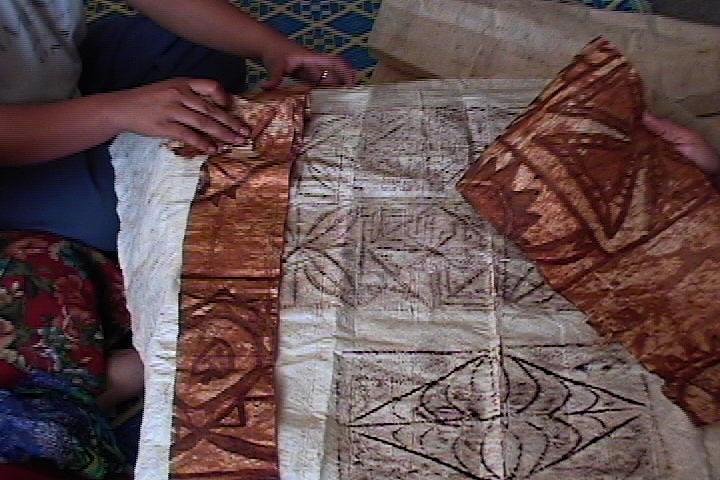The Center for Art and Public Life at the California College of the Arts collaborated with multidisciplinary artist Siu Tuita and members of the Bay Area Tongan community to create, document, and exhibit the making of Tongan tapa cloth (or bark cloth), using island-grown plant materials and dyes.
Lead artist, Siu Tuita, a member of the extended Tongan royal family, obtained permission from the Tongan government to produce this original tapa cloth in the traditional island manner for the first time in the United States. Women work in groups to create tapa cloth from strips of beaten mulberry bark that are adhered with vegetable glue. Once the cloth is assembled, the women create designs by rubbing brown dye into the surface by hand and then outlining the designs with black dye. In the course of making a tapa cloth, they sing traditional songs and do special seated dances that tell of the history and bounty of the Tongan nation.
The finished cloth was introduced through lectures and demonstrations at several public events–an exhibit and a video documentary as well as a dance performance by the ‘Otufelenite Tongan Performing Arts Group. California College of the Arts Scholar-in-Residence Ping-Ann Addo coordinated the project with Siu Tuita and the Tongan artists.
The Center for Art and Public Life at California College of the Arts began operation in 2000 in order to support, enhance, and promote community-based learning throughout the disciplines taught at the California College of the Arts. The Center creates community partnerships based on creative practice that serve both the college community and the diverse populations of Oakland and San Francisco.

